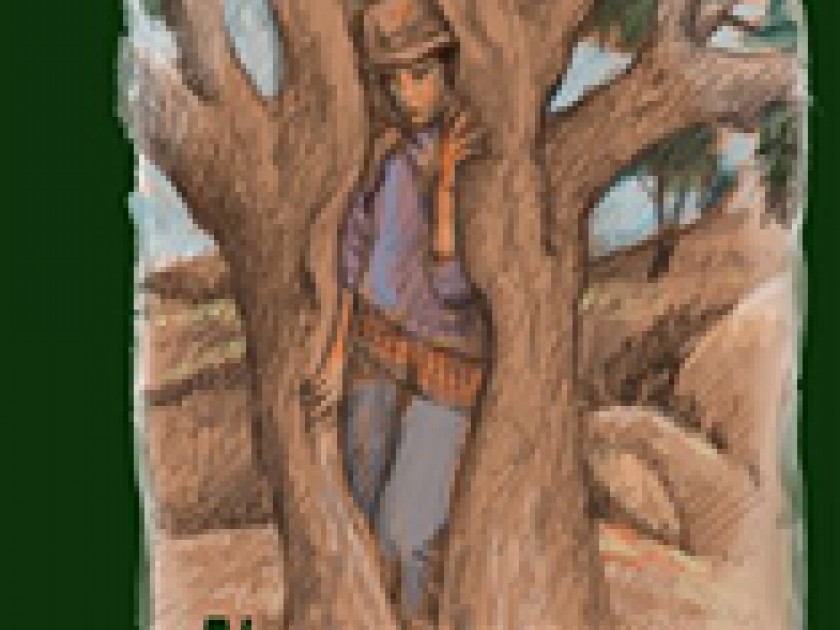
Earlier this week, Haim Watzman wrote about reading Talmud as literature and producing new stories on a monthly deadline. With the release of his new book, Necessary Stories, Haim is guest blogging for the Jewish Book Council all week as part of the Visiting Scribe series here on The ProsenPeople.
Illustrations used to be standard in fiction. Can we conceive of Through the Looking Glass without John Tenniel’s illustrations or Phiz’s illustrations for Charles Dickens’ Pickwick Papers? That sort of partnership rarely happens today, but I’m privileged to be a throwback.
The Jerusalem Report has commissioned a drawing for each of the stories I’ve written over the last nine years. The lion’s share of them have been done by Avi Katz, one of Israel’s finest illustrators. Three of them appear in my newly-published collection of stories, and another one (which accompanied the first post in this ProsenPeople series) appears on the cover. Here I talk about three drawings Avi produced for stories that appear in my new Necessary Stories volume. Unfortunately, I was not able to include these illustrations in the book.
“Peripheral Vision” takes place in an emergency clinic not far from my home. Hanan, a young man with an infection caused by a biking injury, sits in the waiting room, before being called in for treatment. He’s got a new girlfriend and is looking at a photo of her on his phone. The photo is, well, a very personal one.
He suddenly notices that he’s sitting next to a Haredi man of about his own age. The man’s young son sits on his lap. The father is trying to interest his son in a holy book he is reading, but the boy’s eyes keep wandering to the picture on Hanan’s phone. A conversation ensues, about the book the man is studying and the picture on the phone.
What the illustrator has captured in this picture is something I see as very basic to my work. Perhaps because I began my writing career as a playwright, I almost always visualize my stories as if they were taking place on a stage. (In fact, they work very well in performance.) The placement of characters in space, in juxtaposition with their surroundings, is key to conveying mood and theme. Wherever possible, I avoid stating directly what my characters are thinking or feeling and instead convey that with a gesture, a movement, a juxtaposition with some other person or object.
Avi’s illustration for “Peripheral Vision” captures this perfectly. The scene is a large room, but the three central characters and the two objects that occupy their attention — the phone and the holy book — form a self-contained and tight assemblage that brings the characters close — perhaps too close for comfort — within this large space. Note the two triangles — that of the figures themselves, and that of their gazes. Avi shows that the eyes of each character are drawn by something other than what it intends or is expected to see — the boy eyes the phone, the boy’s father considers Hanan, and Hanan squints at the book.
Avi’s illustration for “The Plowman Meets the Reaper” augments my story. Just before the Six Day War of 1967, on the Jerusalem – Tel Aviv train, a young boy whose indigent family immigrated from Iraq encounters a woman originally from Vienna. The story follows how each character depicts the other in his or her mind, and at one point on the train ride they actually draw each other. In choosing to depict this moment, the illustration calls the reader’s attention to an underlying theme that might otherwise be missed.
Understandably, Avi generally chooses to depict the story’s central characters interacting at a key moment. Sometimes, however, I suggest to him that he take an indirect approach. A picture without a human presence can be more subtly suggestive of a story’s deeper currents. Such is the case with his illustration for “Fireflies,” the penultimate story in the book. Rather than describe the story, I’ll let you read it and then consider whether any other sort of picture would have worked as well.
Haim Watzman lives in Jerusalem and is the author of three books: Company C: An American’s Life as a Citizen-Soldier in Israel; A Crack in the Earth: A Journey Up Israel’s Rift Valley; and a story collection, Necessary Stories, a selection of the more than 150 he has written. His play The Chair won the 2021 Theater Institute Award of the Contemporary Jewish Drama International Competition sponsored by the Estera Rachel and Ida Makinskie Jewish Theater in Warsaw. He has translated more than 50 books from Hebrew into English, among them works by Shlomo Avineri, David Grossman, Hillel Cohen, Amos Oz, and Tom Segev. He edited the English-language version of Yuval Noah Harari’s worldwide bestseller, Sapiens. Subscribe to his Substack newsletter here.